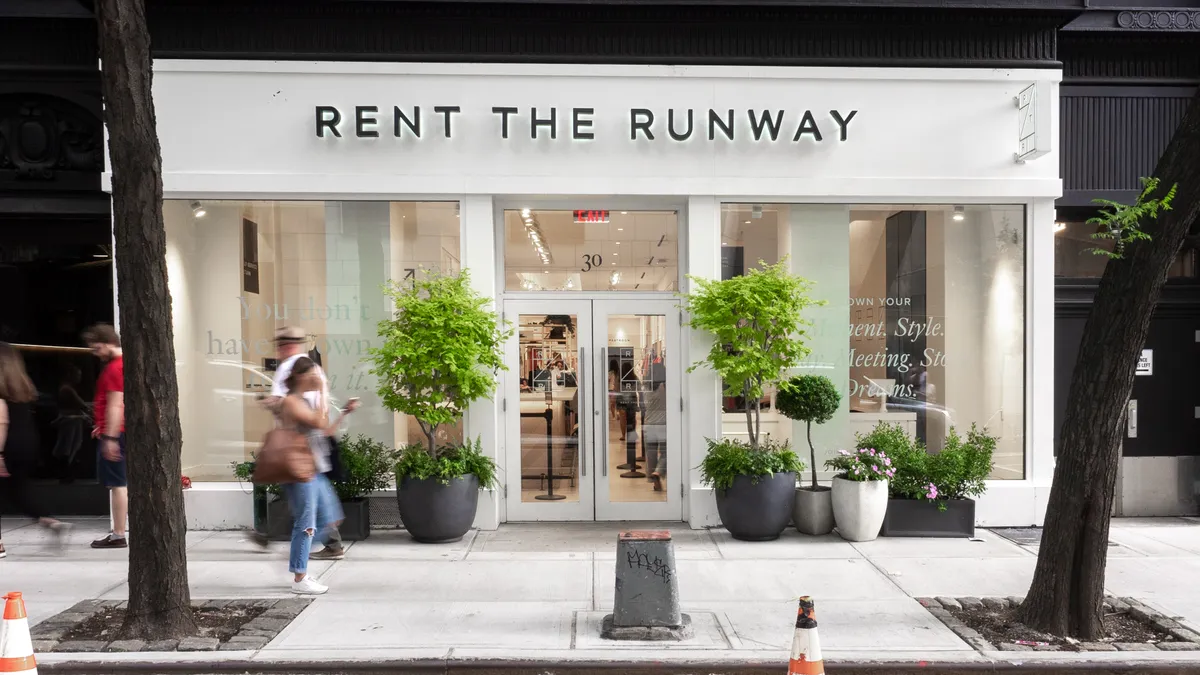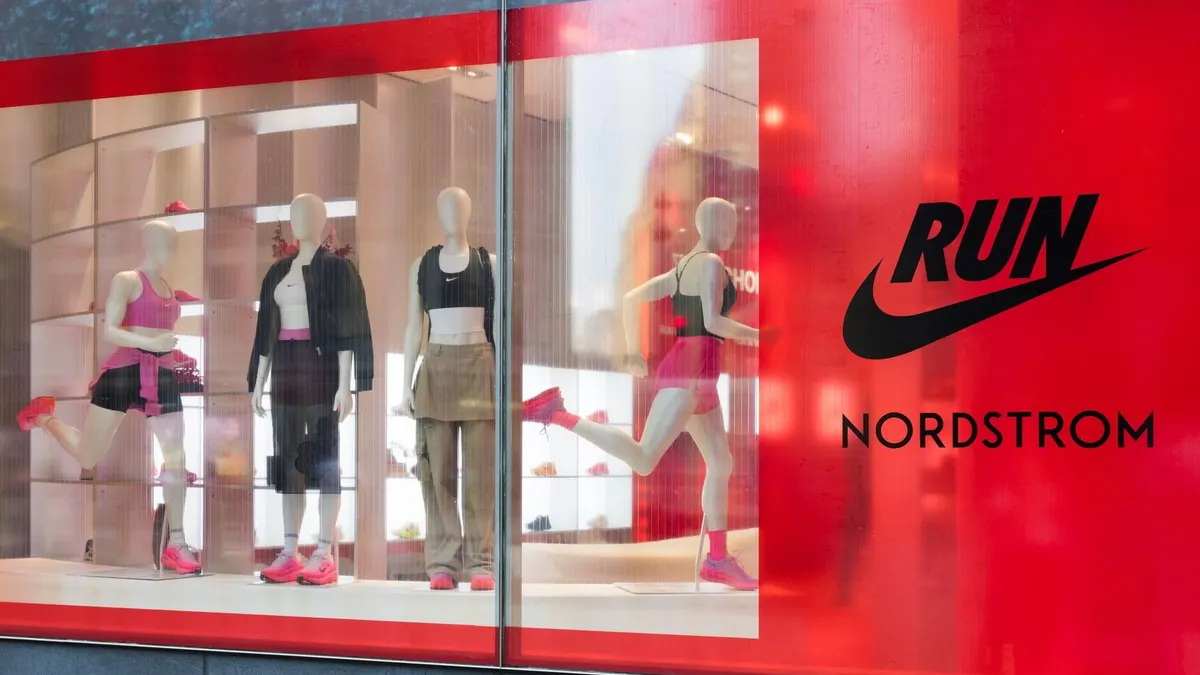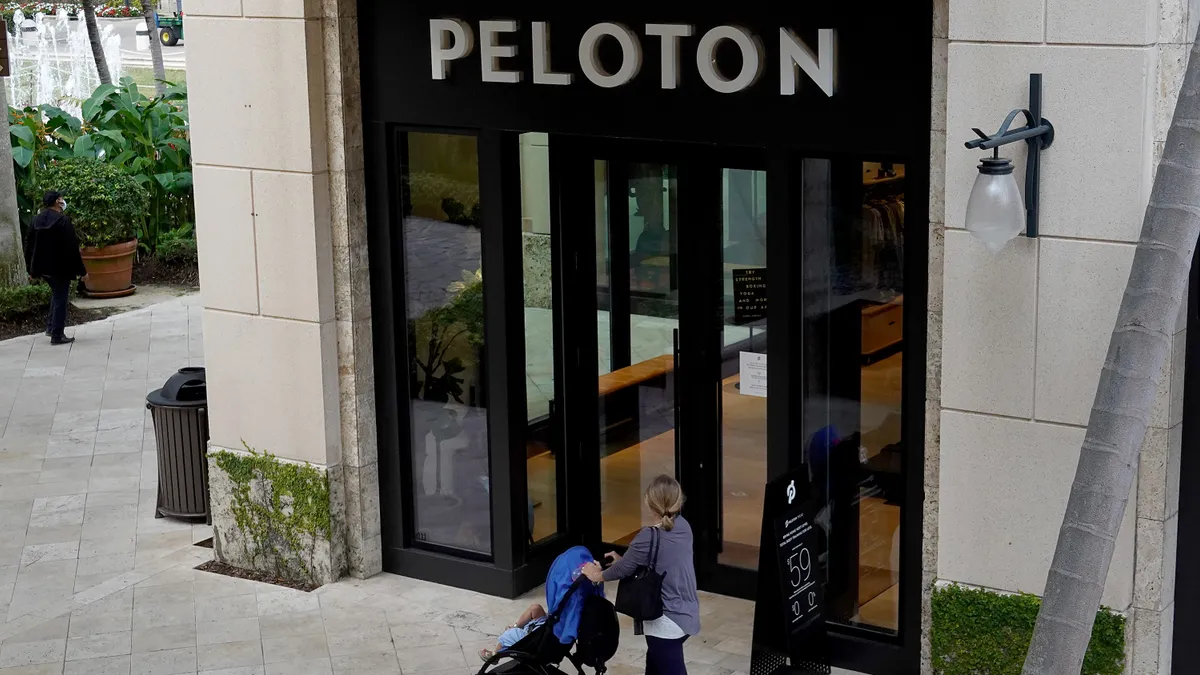Last year saw a number of DTC players file for Chapter 11 or shut down entirely.
From Forma Brands — the parent company of Morphe, Jaclyn Cosmetics and Bad Habit — to SmileDirectClub, a wave of digitally native companies found themselves in bankruptcy court. And department store Showfields, which once dubbed itself as “the most interesting store in the world” and housed several DTC brands as part of its rotating assortment, filed for bankruptcy in October last year and has since shuttered all of its stores.
While 2024 so far has seen a slower start to bankruptcies, filings will likely pick up in the industry, particularly among digitally native retailers.
“This is going to be a year of resettling for a lot of companies that have been disrupted over the last few years,” RapidRatings Executive Chairman James Gellert said. “So many companies have emerged and/or grown over the last three or four years — really boosted by the pandemic — but have faced a much harder time since the pandemic.”
Wayfair, for example, saw sales skyrocket and even reached profitability for the first time during the early days of the pandemic as consumers actively sought out products for their homes. But more recently, the retailer faced falling sales — only ticking up 3.7% in Q3 after experiencing nine consecutive quarters of declines — and continues to report losses. The retailer has also initiated several rounds of layoffs impacting thousands of employees.
Companies now are also facing challenges like inflation and higher cost of goods as a result, Gellert added.
In 2024 “hopefully, we have a more calm or declining inflationary environment and we will have a stable-to-lower interest rate environment, which hopefully helps many of these companies focus on operations and business improvement,” Gellert said.
And while retailers across the industry feel the effects of rising costs, smaller players are disproportionately impacted compared to their bigger or more established competitors. In addition to having greater access to resources, larger companies are more competitive than their smaller peers, which means, in many cases, they can put pressure on their suppliers, whereas smaller companies don’t have the same pricing power, access to capital and wherewithal to weather economic pressures.
Another challenge facing retailers now is being able to create strong brand propositions to customers. While a brand like Hoka has been able to resonate with customers, others, like Wayfair, have struggled with differentiating themselves from competitors, making repeat purchases more difficult, Gellert said. “It’s hard for a Wayfair to have a loyal customer base when a customer may buy from them and then be perfectly happy to buy from Overstock or to buy from Target or to buy from any one of a number of other competitors. So they have to keep spending to be in the face of their customers.”
Over the next two years, the sector will continue to see consolidation, whether that’s through mergers and acquisitions, private equity buyouts or bankruptcies, Gellert said. And in order to avoid bankruptcy, companies need to both be profitable, or on a path to profitability, and have limited debt.
“If you're unprofitable and continue to be unprofitable, and you have a high debt load that needs to be paid for and/or refinanced, you're headed for bankruptcy,” Gellert said.
Looking ahead to 2024, two themes on retailers’ minds will be whether they have improved enough operationally to turn themselves around, and whether companies that need capital or have high debt loads are able to raise capital or refinance in a responsible way, according to Gellert. “Not all companies are going to make it through ’24. The financial health of a lot of these companies continues to be low or have deteriorated.”
Companies that have a 9.99%-50% chance of bankruptcy
Companies that have a 4%-9.99% chance of bankruptcy
According to data from CreditRiskMonitor, 11 digitally native retailers have an increased risk of filing for bankruptcy in the next year. Four of those companies have a FRISK score of 1, the highest risk, representing a 10% to 50% chance of filing for bankruptcy. The other seven retailers have a FRISK score of 2, which indicates a 4% to 10% chance of filing for bankruptcy in the next 12 months.
Several of the brands at risk of bankruptcy also have a high or very high probability of default of the next year, according to RapidRatings analysis. RapidRatings assesses a company’s near- and medium-term financial health.
These companies represent a high or very high risk of default in the next 12 months
The firm’s Financial Health Rating is the primary risk measurement that identifies the risk of default in the next 12 months, while its Core Health Score measures the core financial health of a company and shows its long-term sustainability and operational efficiency. Both the FHR and CHS are measured on a scale of 100, with 0 being the worst and 100 being the best.
Here's a look at some of the companies at risk.
Peloton
Peloton experienced a boost during the early days of the pandemic as gyms were forced to temporarily close and consumers spent more time at home.
But as businesses began to reopen and consumers started to return to their old habits, Peloton struggled to maintain its momentum and attract new customers.
The at-home fitness company in February 2022 announced a plan to lay off 20% of its corporate workforce, or about 2,800 jobs, as well as pull back on capital expenditures. At the same time, Peloton co-founder and CEO John Foley announced he would step down, with Spotify and Netflix veteran Barry McCarthy replacing him. Foley became the company’s executive chair.
A few months later, Peloton was prepping another round of layoffs, this time impacting about 800 employees, as it shuttered stores, according to a Bloomberg report. The company announced price hikes on some models at that time that would impact customers in the U.S. Canada, the U.K., Germany and Australia. Peloton previously raised prices on its subscription.
In September 2022, Foley and co-founder Hisao Kushi stepped down from their positions as executive chair and chief legal officer, respectively. Foley, Kushi and Yony Feng, another Peloton co-founder, went on to start rug company Ernesta.
More recently, Peloton has faced a number of other challenges, including a product recall that impacted its financial results.
The company also continues to see its sales decline. In its most recent quarter, Peloton reported revenue fell 6% year over year to $743.6 million, with connected fitness products revenue declining 16% and subscription revenue increasing 3%.
But Peloton has also introduced a number of initiatives intended to grow the business. The company last May announced a brand relaunch in an attempt to position itself as “more than a bike company.”
The company also formed a five-year strategic partnership in which Peloton would be Lululemon’s exclusive digital fitness content provider and Lululemon would be the primary athletic apparel partner for Peloton. That followed previous legal action taken by the two companies against each other over apparel designs. And at the start of 2024, Peloton announced it partnered with TikTok to create custom content for the social media platform, including live and pre-recorded class clips.
Beyond Meat
Beyond Meat was a pioneer in paving the way for the plant-based meat industry, which has exploded in popularity, and competition, over the past several years.
But more recently the company has faced a number of challenges. In November, a TD Cowen report said Beyond Meat was in “survival mode” and risked issuing a “going concern” warning as a result of deteriorating trends in the U.S. meat alternatives business and negative cash flow.
That same month the company said it planned to lay off about 19% of its workforce, or about 65 employees, and would review its global operations as part of a cost-reduction initiative.
In its most recent quarter, Beyond Meat reported Q3 net revenues were down 8.7% year over year to $75.3 million. However, the company was able to narrow its losses during the period.
After cutting its annual revenue twice, the retailer now expects 2023 revenue to be between $330 million and $340 million.
Other companies within the plant-based sector have struggled in recent years. JBS USA in September announced it would shut down its Planterra plant-based business. And Impossible Foods and Maple Leaf Foods’ Greenleaf Foods initiated layoffs.
Digital Brands Group
Digital Brands Group has landed itself on several of Retail Dive’s past bankruptcy watchlists.
At the start of 2023, the company finally completed its acquisition of clothing brand Sundry, about a year after the deal was initially announced. Digital Brands in June said the company was in the final stages of closing the deal after modifying it significantly: Initially, it had a purchase price of $34 million in cash and $7.5 million in stock; the revised deal had a cash price of $5 million, plus $7 million in cash or equity at Sundry’s option, and another $20 million in equity.
Digital Brands in March took steps to go private — just about two years after making its public debut — after being approached by an unnamed private equity firm. CEO Hil Davis said at the time “if the price were to come in lower than we expected and our valuation doesn’t change, we will hire bankers to go private.”
Then in November, Digital Brands announced that its board of directors decided to initiate a formal review to explore strategic alternatives.
“Given the continued dislocation between Digital Brand Group’s public market value and the intrinsic value of Digital Brands Group’s underlying assets, we believe an evaluation of strategic alternatives is a prudent approach to ensure we are maximizing value for our shareholders,” Davis said in a statement at the time.
In its most recent quarter, the company reported third-quarter net revenue increased 22.5% year over year to around $3.3 million, while operating loss grew 40% to $3.4 million. The company in January said it projects revenue between $27 million and $30 million in 2024, and said Q1 revenue is expected to reach $6 million, with $4.5 million in confirmed wholesale bookings.
And now Digital Brands is plotting a store expansion. The company last month announced plans to open 50 stores, with the first location opening by March. Digital Brands said it will use that first store to clear excess inventory at a higher margin than if it were to sell via an off-price channel. The company said it had “a significant amount of excess inventory with its Sundry acquisition” for the store.
Rent the Runway
Rent the Runway kicked off 2024 by launching a restructuring plan, which included plans to cut 10% of its corporate workforce, impacting 37 roles.
The company’s Chief Operating Officer Anushka Salinas also stepped down at the end of January “in light of the Restructuring Plan.” Salinas remains with the company through Feb. 29 in an advisory role.
The plan, including workforce reductions and open role closures, is expected to deliver $11 million to $13 million in annualized run rate cash savings. The company anticipates to incur up to $4 million in charges during Q4 as a result of the plan. About $2 million to $3 million of those charges will come from employee severance and related costs, while $1 million will include a non-cash impairment charge of company assets.
In December, the company reported third-quarter revenue fell 6.3% year over year to $72.5 million. Rent the Runway’s active subscribers fell 2% from the year-ago period to 131,725.
Gross profit fell 20.8% to $25.2 million, but net loss narrowed to $31.5 million from $36.1 million last year.
Express
While on its own Express is not a retailer typically thought of as digitally native, the retailer has been moving deeper into the DTC space in recent years.
The company in 2019 debuted UpWest, a direct-to-consumer brand focusing on casual apparel, loungewear and sleepwear for men and women, as well as home goods and wellness products. And Express Inc. and WHP Global last year acquired Bonobos from Walmart for $75 million.
The company has experienced a number of recent challenges. In April 2023, Express Inc. received a letter from the New York Stock Exchange notifying it that it fell out of compliance with the continued listing requirements and faced delisting. Then in August, the company said it planned to cut 150 jobs by the end of the third quarter and initiated a reverse stock split, which it said would allow it to regain compliance with the NYSE.
By November, the retailer had lost its CFO a little over a year and a half after he joined the company. That happened just before Express Inc. reported Q3 earnings results.
While overall Express sales were up 5% year over year in the third quarter — helped by the Bonobos acquisition — sales at the Express and UpWest brands fell 7%. Comps for Express stores and e-commerce fell 4%, with retail store comps falling 16%. E-commerce comps rose 10%.
CEO Stewart Glendinning — who was appointed in September after Tim Baxter abruptly resigned — in November acknowledged the retailer’s missteps, especially related to its merchandise strategy where its women’s assortment was “out of balance across categories, price points and wearing occasions.”
A bankruptcy filing could be coming sooner rather than later for Express. The retailer reportedly hired restructuring adviser M3 and law firm Kirkland & Ellis to explore options related to its $275 million debt load, according to a report this week from The Wall Street Journal citing unnamed sources. The report said Express could file bankruptcy within weeks.
Marley Spoon
Marley Spoon entered the increasingly crowded meal kit space in 2014.
In recent months, the company has seen sales fall. In the fourth quarter, Marley Spoon reported revenue fell 18% year over year to 73.5 million euros (about $78.7 million at press time), while marketing expenses grew 6% to 9.3 million euros. The company’s gross profit fell 19% year over year to 35 million euros. Within its U.S. segment, active customers fell 20% year over year, while active subscribers fell 21% and the number of orders declined 20%.
Last month Marley Spoon announced it was selling its U.S.-based operations assets to fresh meals producer FreshRealm in a $24 million deal, which is expected to close this month.
The deal includes three fulfillment and production facilities in Texas, California and New Jersey. The company hopes to reduce its costs and increase margins by selling off some of its assets.
The deal mirrors a similar one with Blue Apron, which likewise has faced challenges as of late, including layoffs and warnings of a NYSE delisting. Blue Apron last May announced plans to shift to an asset-light model and sold its production and fulfillment facilities to FreshRealm. By late last year, Blue Apron had sold itself to Wonder Group, a food tech company started by ex-Walmart e-commerce executive Marc Lore.




















